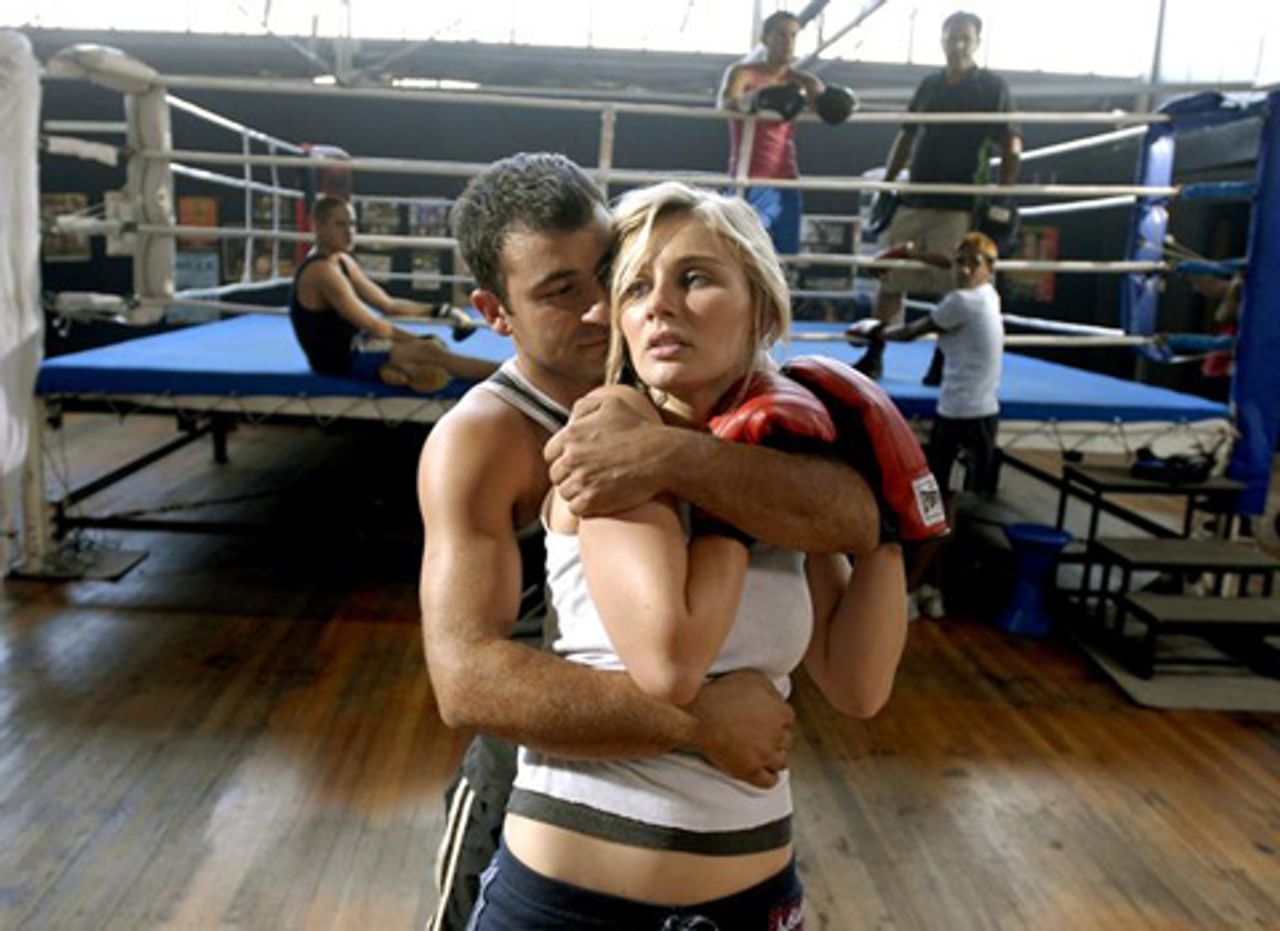The Combination is a recently released low budget production about immigrant youth in Sydney's working class western suburbs. The movie is the directorial debut of actor David Fields (Two Hands, Chopper, Blackjack, Unfinished Sky) and based on the personal experiences of actor George Basha, a first-time scriptwriter. Basha plays the central character John Morkos, a 30-something Lebanese Australian just released from jail.
John is determined to rebuild his life, assist his widowed mother, and provide a moral compass for his teenage brother Charlie (Firass Dirani). He secures work at a local boxing gym and falls in love with Sydney (Claire Bowen), an Anglo-Australian girl. Their developing relationship is frowned upon by her racist parents.
John gradually discovers that Charlie is being drawn into drug-trafficking and gang violence and warns him that he will end up in jail or worse. Charlie ignores John's advice and together with Zeus (Ali Haidar), one of his closest school friends, begins working for a local crime boss. Charlie claims that the money and guns will win him respect from anti-immigrant racists at his school and elsewhere. The result is bloody and tragic and threatens to destroy the entire Morkos family.
Fields and Basha have attempted to make The Combination as authentic as possible. Most of the actors are non-professionals and were encouraged to flesh out their characters with improvised dialogue. Set in 2005, it also includes brief documentary footage from the Cronulla riots—the violent rampage unleashed against Middle Eastern immigrants by Australian nationalist thugs at the Sydney beachside suburb on December 11, 2005.
 George Basha and Clare Bowen in The Combination
George Basha and Clare Bowen in The CombinationThe performances of the high school kids are energetic and for the most part convincing. Lebanese-Australian Ali Haidar, Iraqi-Kurd Rahel Abdulrahman and Scott (Vaughan White), their racist Anglo-Australian rival in the movie, bring much of their own experiences and the street language from Sydney's working class suburbs to their roles.
The commitment of the young actors and the dramatic potential of Basha's former brushes with the law are important, but they only provide a starting point. The real challenge is the development of convincing narrative and characters.
The Combination is sorely deficient in this regard. It cries out for more character depth, in particular of its principal protagonists—John, Charlie, Sydney and Zeus—and a more profound sense of what has produced them and why. Just as serious documentary filmmakers are obliged to uncover the social and historical roots of the problems they document—whether from the "horse's mouth" or other sources—similar insights are also required to make fictional characters in The Combination become whole.
The relationship between John and Sydney unfortunately lacks chemistry. In one scene John attempts to give her boxing lessons at the local gym where he works. She storms out but the entire scene feels artificial. Later he takes her to a Middle-Eastern social event at a local restaurant where she is mesmerised by Lebanese traditional music, food and dancing. This is unconvincingly presented as something of a turning point in their romance, as if Sydney has had no contact whatsoever with this culture, despite living in the western suburbs where tens of thousands of Middle Eastern immigrants reside.
Charlie's descent into the world of criminal violence and drug trafficking is equally sudden and seems to go against his intelligent and generally kind persona.
At one point John, who is becoming increasingly frustrated about the pressure being applied by Sydney's parents to their daughter, declares that "Australia is a racist country ... it was built on racism."
This throwaway line explains nothing and is reflective of the filmmakers' limited understanding of their movie's central theme. When this is later followed by documentary footage from the Cronulla riots, featuring racist locals attacking Middle-Eastern youth, the film falsely and pessimistically gives the impression that all Australians are endemically anti-immigrant.
No attempt is made to inform cinema audiences that the riots were whipped up by right-wing radio shock-jocks and Rupert Murdoch's Sydney tabloid, the Daily Telegraph, and that they followed a concerted anti-Arab campaign by the Howard Liberal government and its state Labor government counterparts in the aftermath of September 11, 2001 and the launching of the fraudulent "war on terror".
Basha told one local publication that most films made about immigrant Australians were "spoof comedies" and that he wanted to make a real story about life in Australia. "This story needed to be told," he said, "because we have issues, not only in the western suburbs, but all over Australia, things such as guns, drugs; and the biggest issue is racism all over the world."
The Combination, however, is confused and tends to reinforce prevailing stereotypes, with racism generally presented as a moral question. Field and Basha seem to have little understanding that racism is a political mechanism that is consciously used to divide working people and hide the reality that poverty, unemployment and all other forms of social deprivation are products of the profit system, not immigrant workers.
The movie makes no reference to the de-industrialisation of entire areas of western Sydney and the social difficulties—high unemployment, low-paid casual jobs, inadequate education and lack of recreation facilities—facing working class youth there. Nor does it give any indication of the level of police harassment of youth from Middle-Eastern backgrounds—an everyday reality in the western suburbs.
The Combination ends on a disturbing note when John decides to avenge the wrongs against his family and beats up the local crime boss in a violent attack, to the applause of neighbourhood onlookers. Some local critics claim the movie is an impassioned appeal against gang violence, but the ugly finale strongly suggests that individual acts of vigilante justice are somehow acceptable.
Those hoping to gain greater understanding of the social factors underpinning The Combination's central themes—gang violence and racism—will find few coherent answers in this movie.
